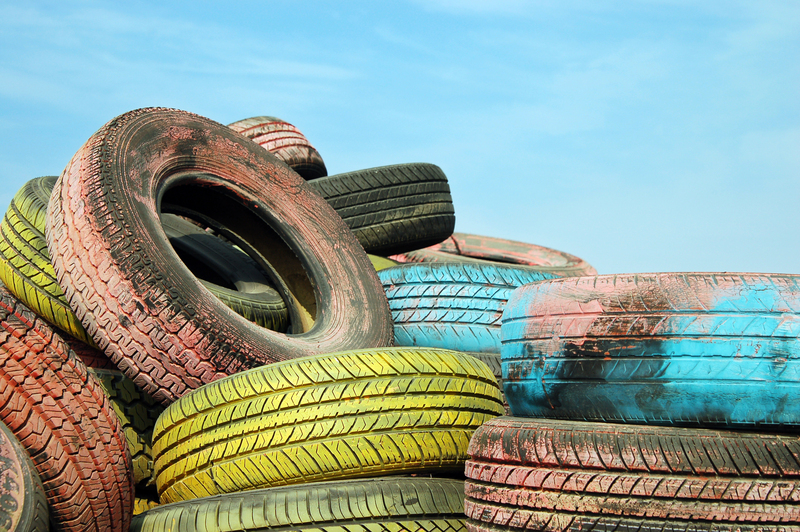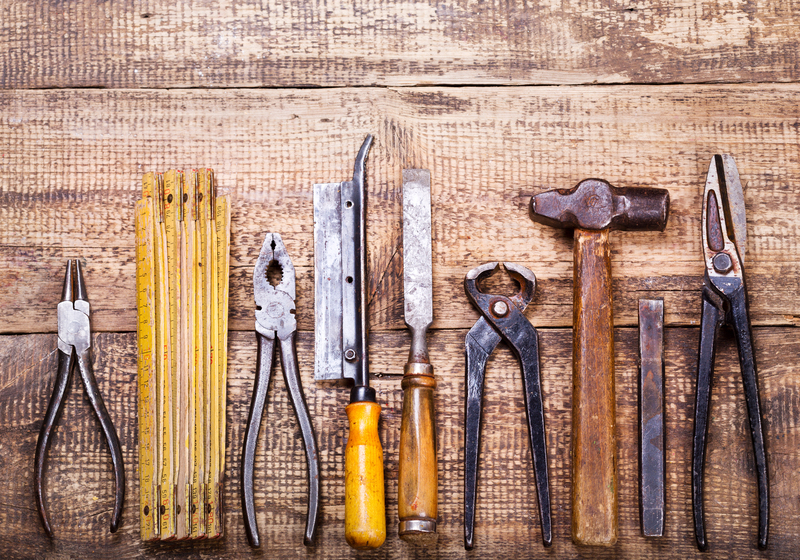Create Clarity: How De-Cluttering Reduces Stress and Confusion
Are you feeling overwhelmed by the mess around you? Clearing clutter from your surroundings can do more than just tidy up your home--it can play a powerful role in reducing stress and confusion in your mind. In this comprehensive article, we will explore the science-backed benefits of de-cluttering, practical techniques to minimize chaos, and lasting strategies to create clarity in your personal and professional life.
Understanding the Link Between Clutter and Mental Health
Clutter is not merely a collection of physical items; it's a significant contributor to mental distress. According to multiple psychological studies, excessive and disorganized belongings can elevate cortisol levels (the primary stress hormone), impair decision-making abilities, and contribute to overall feelings of confusion and overwhelm.
- Stress Triggers: Disorganized spaces bombard your senses and increase anxiety.
- Decision Fatigue: Excess clutter makes it harder to think clearly, leading to indecisiveness.
- Emotional Weight: Holding onto unnecessary items symbolizes holding onto the past or unresolved issues.
When you remove excess belongings and streamline your environment, your brain can focus better, your emotions stabilize, and you regain a sense of control and clarity. But why exactly does a messy environment have such a profound impact?
The Psychological Effects of Clutter
Clutter sends visual reminders of things needing attention--all at once. This constant stimulus overload may lead to chronic stress and ongoing feelings of guilt or embarrassment. On the contrary, de-cluttering creates mental space, allowing you to be more present, focused, and relaxed.
- Reduced Attention Span: Visual clutter competes for your brain's attention, making concentration difficult.
- Lower Productivity: Searching for misplaced items wastes time and increases frustration.
- Relationship Strain: Arguments over mess can strain relationships with family or coworkers.

Benefits of Decluttering: A Path to Clarity and Wellbeing
When you commit to de-cluttering your space, the rewards extend far beyond a clean home. The journey towards clarity and order brings an array of benefits that positively affect every area of your life.
- Reduced Stress: An orderly environment specifically signals your mind and body to relax.
- Improved Mental Health: Individuals who regularly clear clutter report lower anxiety and greater satisfaction.
- Boosted Focus: With distractions minimized, you can channel your energy where it matters most.
- Increased Productivity: Efficient, organized spaces help you accomplish tasks faster and with less effort.
- Enhanced Creativity: A clear area inspires creativity and fresh solutions to challenges.
- Better Sleep: Studies show a clean bedroom environment can improve both quality and duration of sleep.
By experiencing these advantages, you pave the way for improved physical health, emotional balance, and greater happiness. The ripple effect of de-cluttering for clarity touches every aspect of your life, relationships, and personal growth.
How to Start De-cluttering: Steps Towards a Clearer Life
Ready to get started? Establishing a de-cluttering routine doesn't have to be overwhelming. Begin small and focus on one area at a time. Here's a practical, step-by-step guide to help you create clarity through organizing both your environment and your mind.
Step 1: Set Clear Goals
Decide exactly what you want to achieve. Whether it's reducing daily stress, creating a more efficient workspace, or preparing for a big life change, your goals will keep you focused and motivated.
- Write down your vision for how your ideal space looks and feels.
- Prioritize which rooms or categories (clothes, paperwork, kitchen, etc.) cause the most confusion or frustration.
Step 2: Break Down the Process
Tackle de-cluttering in bite-sized sessions. Trying to overhaul your entire house in one day leads to burnout and disappointment.
- Set a timer for 15-30 minutes per session.
- Work by category or zone--closet, desktop, pantry, etc.
- Maintain consistency--small, regular efforts add up over time.
Step 3: Sort and Categorize
Label items using these simple categories:
- Keep: What you love and use frequently.
- Donate/Sell: Items in good condition that no longer serve you.
- Recycle: Broken or outdated items that can be responsibly disposed of.
- Discard: Trash or items with no further use.
When in doubt, ask yourself: Does this add value or clarity to my life?
Step 4: Restore Order and Organize Efficiently
Arrange your remaining possessions so they are easily accessible and visually soothing. Invest in storage solutions that match your aesthetic and needs, such as baskets, shelves, or digital file systems for paperwork.
- Group similar items together for a more logical flow.
- Label containers for greater efficiency.
- Adopt a "one in, one out" rule to prevent clutter from accumulating again.
Step 5: Maintain Your Clarity
The key to lasting clarity is maintenance. Build simple habits into your routine, like tidying up each day or scheduling monthly reviews of your spaces.
- Quick daily reset: Spend 5-10 minutes putting belongings back in their place.
- Weekly check-ins: Address any new clutter before it piles up.
- Annual reviews: Reflect on your belongings and let go of what no longer serves you.
De-Cluttering Beyond the Home: Workspaces, Digital Life, and Mindset
While physical clutter is the most visible source of chaos, mental, digital, and professional disorganization also fuel confusion and anxiety. Let's explore how you can extend your clarity-creating practices beyond your living space.
Organize Your Workspace
A tidy desk equals a tidy mind. Office clutter--from piles of files to tangled cords--increases stress and distractibility. Apply the same principles:
- Clear off unused items regularly.
- Set up storage solutions for supplies and paperwork.
- Keep essential tools within easy reach and box up what you use less frequently.
De-clutter Your Digital Life
Inbox overload, messy desktops, and endless notifications can be just as overwhelming as a cluttered closet. Digital de-cluttering can have a transformative effect on mental clarity by reducing distractions and making information easy to find.
- Unsubscribe from newsletters and notifications you no longer read.
- Sort files into labeled folders, then back them up routinely.
- Delete unused apps and organize your device's home screen.
Cultivating a Clear Mindset
Sometimes, mental clutter manifests as racing thoughts, unfinished business, or negative self-talk. Decluttering your mind is as essential as organizing your physical surroundings.
- Practice mindfulness and meditation to restore calm and focus.
- Keep a journal or to-do list to offload worries and track priorities.
- Schedule time for self-reflection and intentional rest to avoid burnout.
De-Cluttering Methods: Which One is Right for You?
Every person's path to clarity is unique. There are several popular de-cluttering techniques and philosophies--choose the one that best aligns with your personality and goals.
Marie Kondo's "Spark Joy" Method
This globally popular approach encourages you to keep only those items that genuinely spark happiness. By embracing gratitude and intentionality, this decluttering for clarity philosophy makes it easier to let go of unnecessary things.
The Minimalist Approach
Focuses on owning fewer possessions and emphasizing quality over quantity, the minimalist lifestyle helps reduce distractions and create a sense of freedom. Minimalism is about maximizing space, energy, and attention for what really matters.
Four-Box Method
- Box 1: Keep
- Box 2: Donate/Sell
- Box 3: Store (Seasonal or sentimental items to revisit later)
- Box 4: Trash
This method is especially useful for quick, decisive organizing sessions where you need to sort through high volumes of stuff efficiently.
Room-by-Room or Zone-Based Strategy
Target one area at a time, thoroughly completing the process before moving on. This prevents overwhelm and shows quick, visible results, motivating you to keep going.

Tips to Avoid Re-cluttering and Maintain Lasting Clarity
- Shop Mindfully: Before purchasing, ask yourself whether you truly need an item and if it contributes to your clarity.
- Practice Gratitude: Appreciate what you already own, reducing the impulse for unnecessary acquisitions.
- Involve the Whole Family: Encourage shared responsibility for common spaces to decrease resentment and confusion.
- Create Clear Boundaries: Assign specific homes for every item--end the "junk drawer" mentality.
- Stay Adaptable: Life changes, and so should your organizational system. Revisit and update as needed.
Conclusion: Make Clarity Your Lifestyle
In our fast-paced, ever-changing world, creating clarity through de-cluttering is not just a trend--it's an essential act of self-care. By consistently organizing your surroundings, digital spaces, and inner thoughts, you invite calm, focus, and energy back into your life.
Remember, this journey is about progress, not perfection. Each item you let go of, every space you restore, and every mental worry you release contributes to a brighter, clearer, and more peaceful way of living. Embrace de-cluttering as your ongoing ally in reducing stress and confusion, and watch as your sense of clarity grows each day.
Start small. Act consistently. Cherish your newfound clarity and enjoy the transformation de-cluttering brings to your mind, your home, and your life.